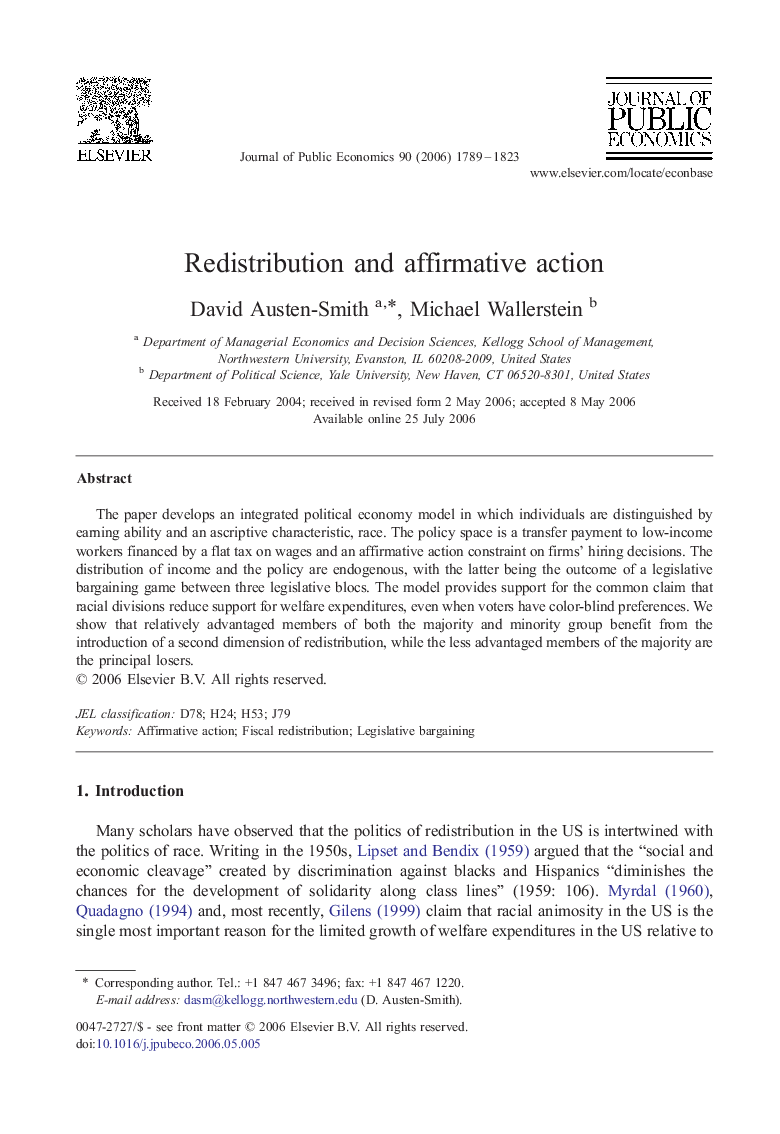| Article ID | Journal | Published Year | Pages | File Type |
|---|---|---|---|---|
| 970361 | Journal of Public Economics | 2006 | 35 Pages |
The paper develops an integrated political economy model in which individuals are distinguished by earning ability and an ascriptive characteristic, race. The policy space is a transfer payment to low-income workers financed by a flat tax on wages and an affirmative action constraint on firms' hiring decisions. The distribution of income and the policy are endogenous, with the latter being the outcome of a legislative bargaining game between three legislative blocs. The model provides support for the common claim that racial divisions reduce support for welfare expenditures, even when voters have color-blind preferences. We show that relatively advantaged members of both the majority and minority group benefit from the introduction of a second dimension of redistribution, while the less advantaged members of the majority are the principal losers.
